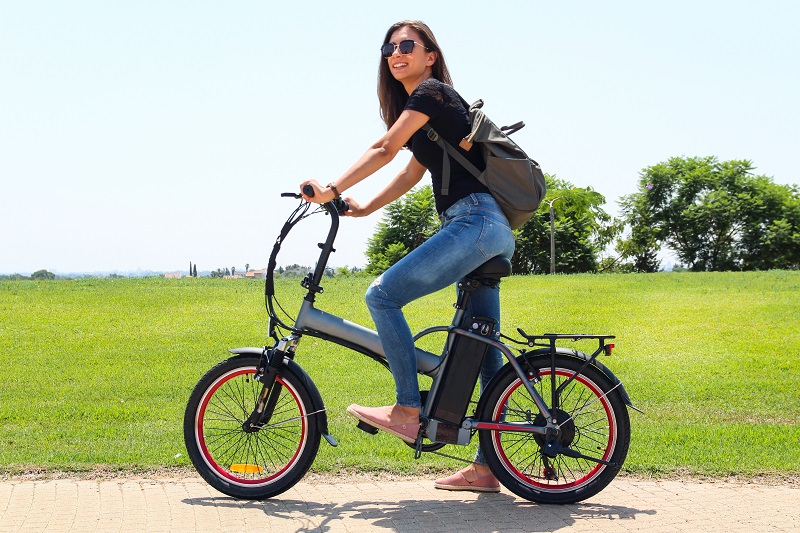Introduction
In recent years, have you witnessed a rise in the number of people zipping around your neighborhood on their sleek e-bikes? Ever given a thought to why? The evolution of e-bikes has not only transformed human-powered transportation but has also shifted gears towards sustainable commuting. This evolution has changed the lives of many urban commuters and rewarded outdoor fun and fitness enthusiasts. But, how did these oh-so-cool machines come into being, and where are they headed?
In this blog, we will peel back the layers of e-bike history, dive into their present-day breakthroughs, and prognosticate about their future trends. We will also shed some light on the pros and cons of e-bike adoption to better comprehend their nuanced role in our lives. So, are you ready to unravel this fascinating journey of e-bikes?
This comprehensive guide offers an in-depth exploration of this trendy mode of transportation, a phenomenon that’s not just a phase, but a revolution in personal mobility. By the end of this read, we hope to broaden your understanding and perspective on e-bikes and help you appreciate this fantastic amalgamation of modern design, technology, and environmental preservation.
When and Where Did E-bikes Originate?
The genesis of e-bikes traces back to the late 19th Century, and ever since, they’ve been in a constant state of evolution. It all began in 1895 when American inventor Ogden Bolton Jr. patented his first electric bicycle design. However, it was not until the late 20th Century that technology allowed e-bikes to spread their footprints in Europe, Asia, and ultimately, worldwide. Today, they present a mainstream and practical solution to various modern-day commuting issues!
Although historically overshadowed by traditional bikes, the acceptance of e-bikes took a significant turn with the advent of advanced electric systems and designs. However, even today, the e-bike domain is a vast ocean, waiting to be discovered and treasured by the global population.
So, why have e-bikes become so popular, and what led them to their present state? Let’s plunge into their exciting evolution and ride a wave back to the current date!
Why the Uptick in E-bike Usage?
The surge in e-bike usage can be attributed to several factors. When conventional bikes met electric motor technology, it not only brought speed but also added comfort and convenience to biking. The integration of technological improvements has led to precision, adaptability, and extended range, captivating a broad audience.
The e-bikes of today are not just about ease of movement but are also stepping stones towards sustainable lifestyles. Amidst the growing consciousness toward environmental preservation, e-bikes have emerged as a green means of transportation, significantly reducing carbon footprints.
Imagine breaking away from the shackles of perennial traffic congestion and soaring fuel prices. Contemplate a world with reduced pollution levels and healthier lifestyles. Is this not desirable and plausible? Let’s understand this further!

Who Can Benefit From E-bikes?
From urban commuters to outdoor adventurists, almost anyone can benefit from e-bikes. These eco-friendly vehicles enhance the commute experience for city dwellers, simultaneously contributing to a cleaner environment. They also break barriers for the elderly and people with mobility issues, fostering an inclusive society.
E-bike also comes as a blessing for fitness enthusiasts. The adjustable pedal-assist mechanism contributes to effective workout regimes. Furthermore, their business potential emerges in the form of bike taxis and delivery services, opening new economic avenues.
No wonder e-bikes are closing in on traditional bikes, marking the dawn of a new era in transportation!
Pros and Cons of E-bikes
However, like any other technology, e-bikes to arrive with their bags of pros and cons. They are an excellent means of transportation – efficient, eco-friendly, economical, requiring less physical strain, and simply fun! The drawbacks often encompass issues related to safety, regulations, initial costs, and maintenance.
However, the constant technological advancements promise to address these limitations, fueling optimism about the future of e-bikes.
What Future Awaits E-bikes?
As we anticipate the future unfolds, the realms of possibility for e-bikes look promising. The prospects of enhanced battery technology, refined designs, more user-friendly features, increased affordability, and tighter legislation promise an exciting future for e-bike enthusiasts.
The ongoing R&D in this sphere also kindles hope for innovations that have the potential to transform urban landscapes and push the boundaries of personal mobility. E-bikes are undoubtedly here to stay!
Conclusion
Swirling through the annals of history, we have traversed the timeline of e-bikes, studied their rising popularity, assessed their pros and cons, and explored their future horizons. The e-bike revolution is not just making waves but is indeed an unignorable typhoon in the realm of personal mobility.
As we strive towards better, cleaner, and healthier lives, e-bikes are a beacon of hope in this journey. So, the next time you spot an e-bike whizzing through your neighborhood, remember it’s not just a commuting tool, but a signpost of a sustainable future that we all are striving to achieve. The e-bike revolution is in full throttle, and there’s no turning back!


